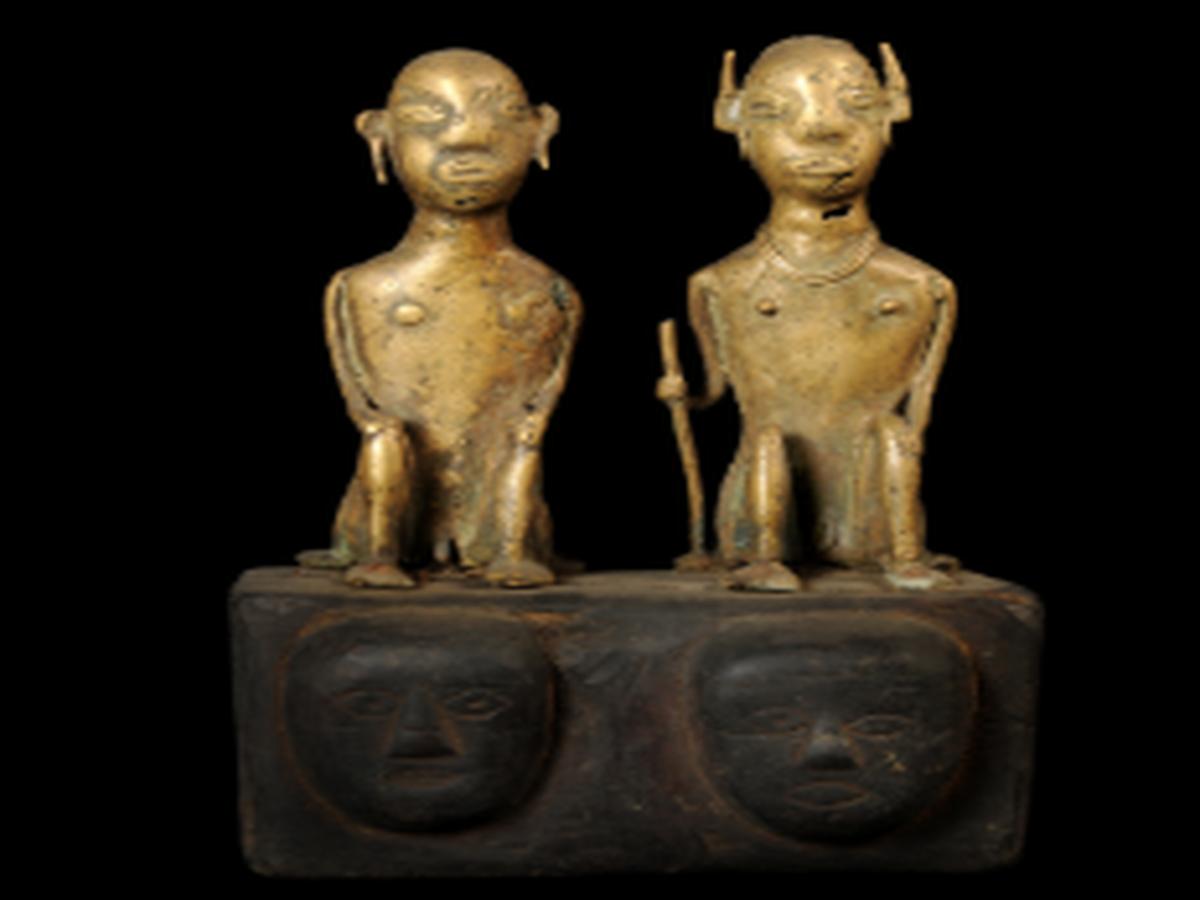State
Tribe Name
Art Type
short description
Both statue of couple becomes the important cultural setting for Konyak Naga tribes residing in Mon District of Nagaland in India. The Konyaks are famous for their wood, bones, and metal arts, which tell an elaborate story about their traditions, society, and history as headhunting warriors. The statue is an exceptional depiction of a male-female couple seated on a wooden base, exquisitely rendered in brass. The female figure may be seen as holding -walking with- a stick in her right hand, either representative of her standing in the realism of life or symbolism in some ritualistic act. The necklace can be an identity and status symbol that Konyak women are wearing with pride. The figures wear earrings, showing the tribe's experience in the craft of ornamentation, which also signifies the wearer's age, marital status, and social ranking among these peoples
Thumbnail

Filter Postion
Left
Filter Background
Off
Theme
Filter Header Image

content
Image

description
Both statue of couple becomes the important cultural setting for Konyak Naga tribes residing in Mon District of Nagaland in India. The Konyaks are famous for their wood, bones, and metal arts, which tell an elaborate story about their traditions, society, and history as headhunting warriors. The statue is an exceptional depiction of a male-female couple seated on a wooden base, exquisitely rendered in brass. The female figure may be seen as holding -walking with- a stick in her right hand, either representative of her standing in the realism of life or symbolism in some ritualistic act. The necklace can be an identity and status symbol that Konyak women are wearing with pride. The figures wear earrings, showing the tribe's experience in the craft of ornamentation, which also signifies the wearer's age, marital status, and social ranking among these peoples.
Technically, they constitute the base of the statue. Symbolically, they represent the couple. The two human faces are carved into the front of the pedestal and most likely represent ancestral spirits, battle victors, or spiritual custodian. Such imagery is related in Konyak tradition to the historic headhunting customs of the tribe and the associated honoring of strength, honor, and lineage. This statue stands for unity, artistry, and veneration for ancestors among the Konyak Naga tribe. These are now found in several institutions, including the Indian Museum at Kolkata; a mark of the eternal existence of tribal art and the cultural depth of the indigenous peoples of Nagaland
Technically, they constitute the base of the statue. Symbolically, they represent the couple. The two human faces are carved into the front of the pedestal and most likely represent ancestral spirits, battle victors, or spiritual custodian. Such imagery is related in Konyak tradition to the historic headhunting customs of the tribe and the associated honoring of strength, honor, and lineage. This statue stands for unity, artistry, and veneration for ancestors among the Konyak Naga tribe. These are now found in several institutions, including the Indian Museum at Kolkata; a mark of the eternal existence of tribal art and the cultural depth of the indigenous peoples of Nagaland
Image Mode
landscape
promoted
On
Verified
Off
